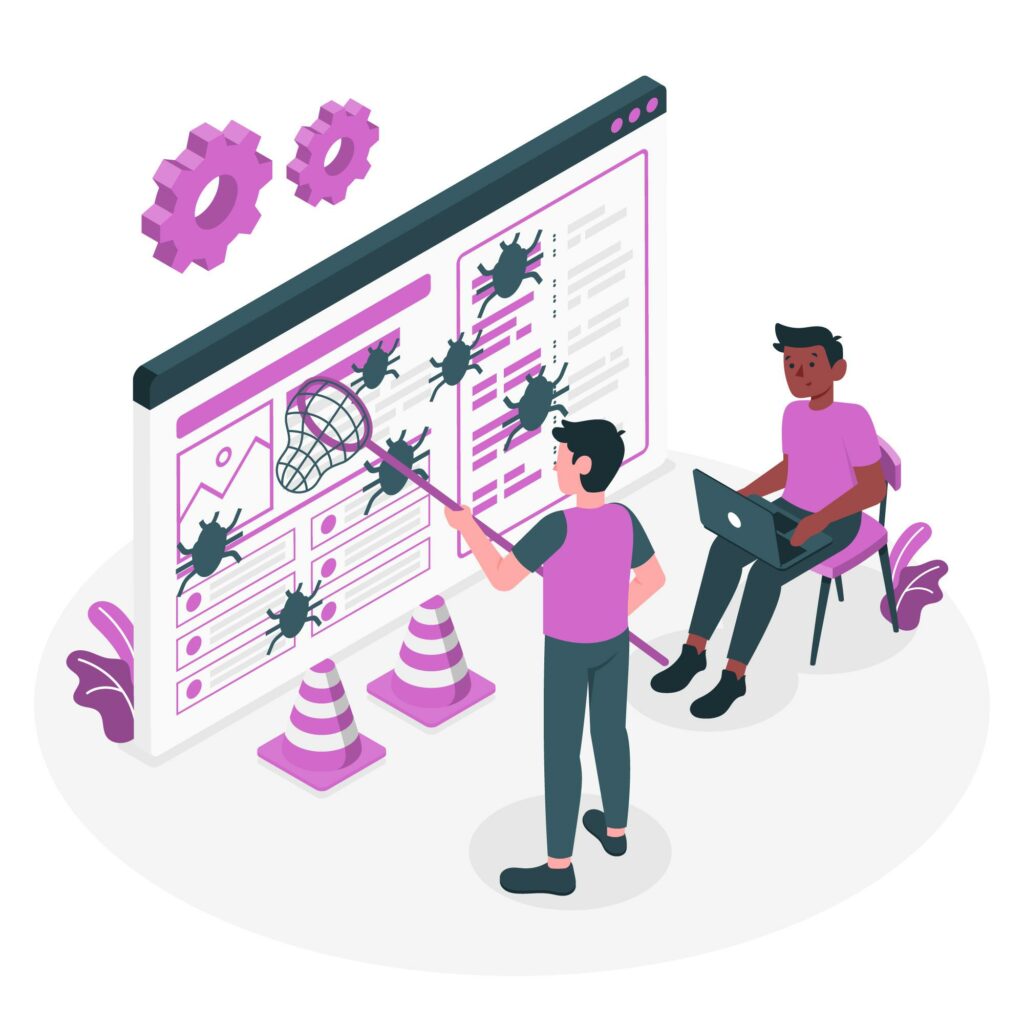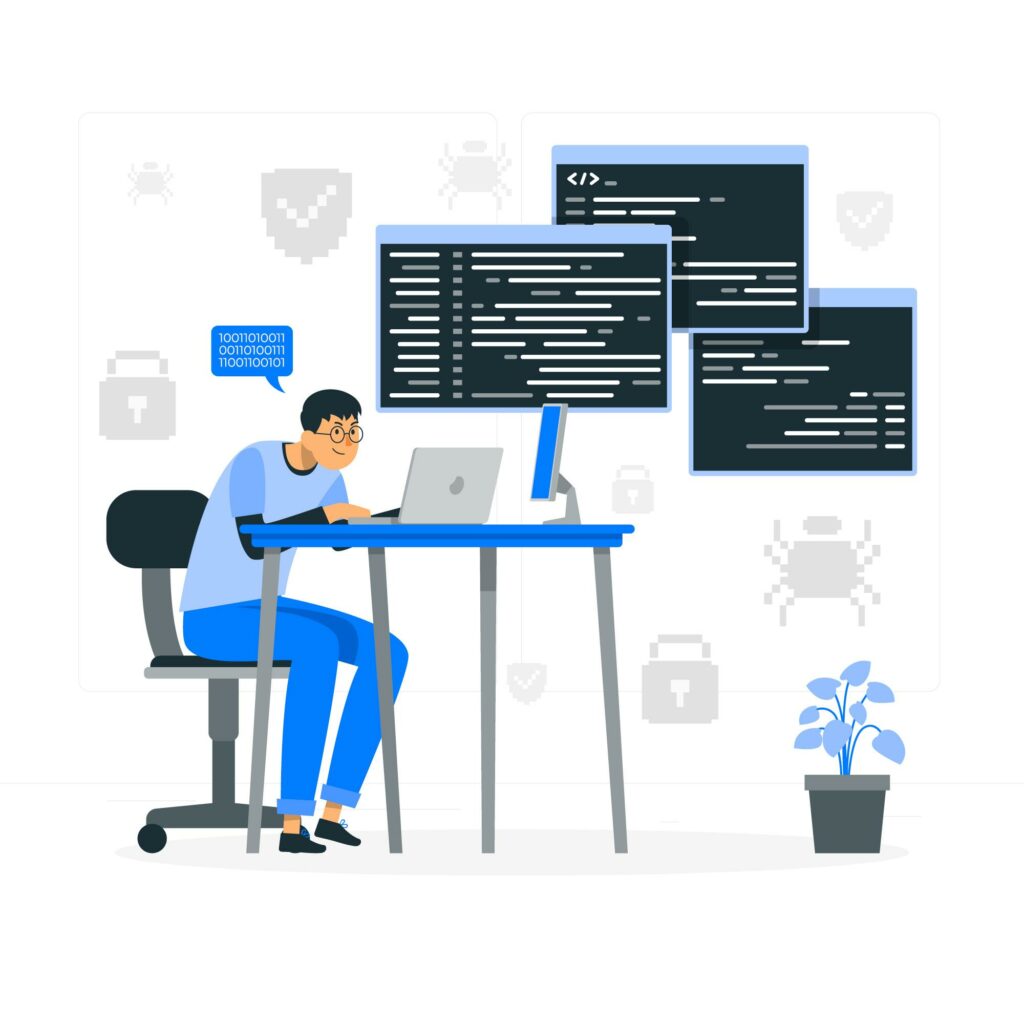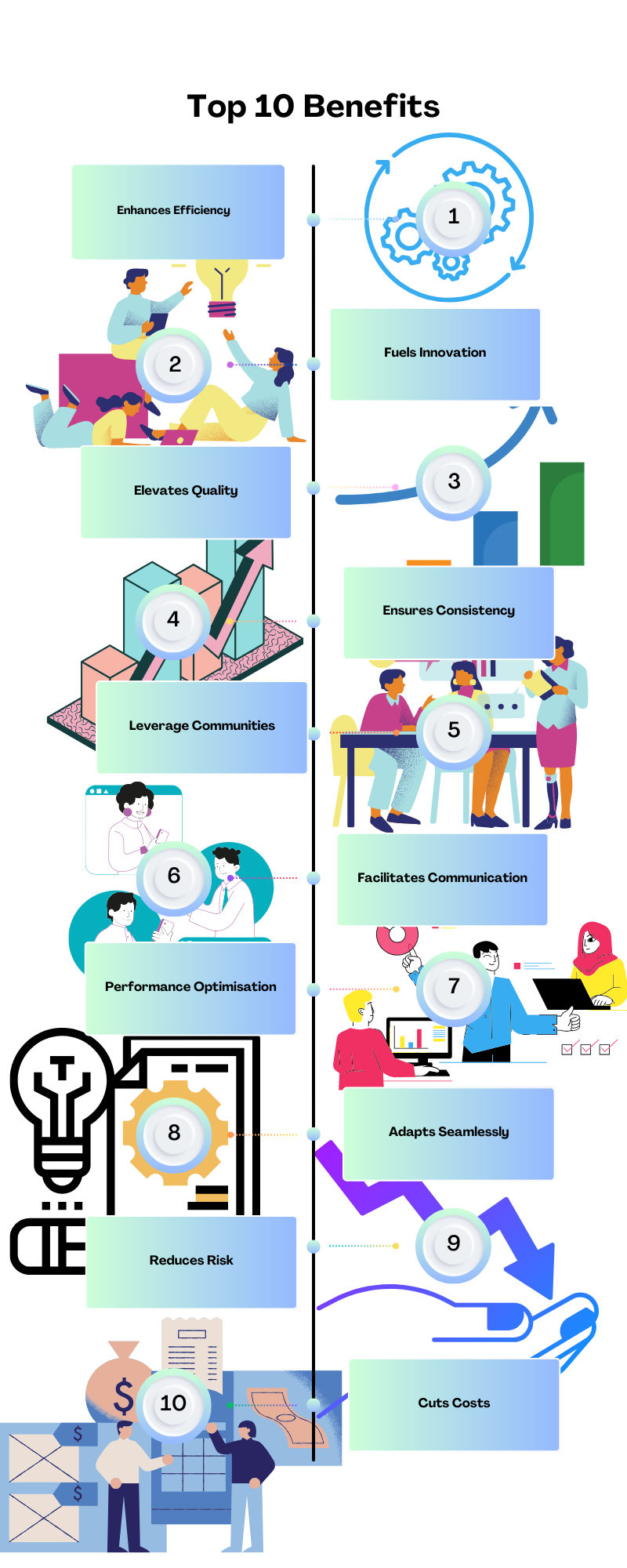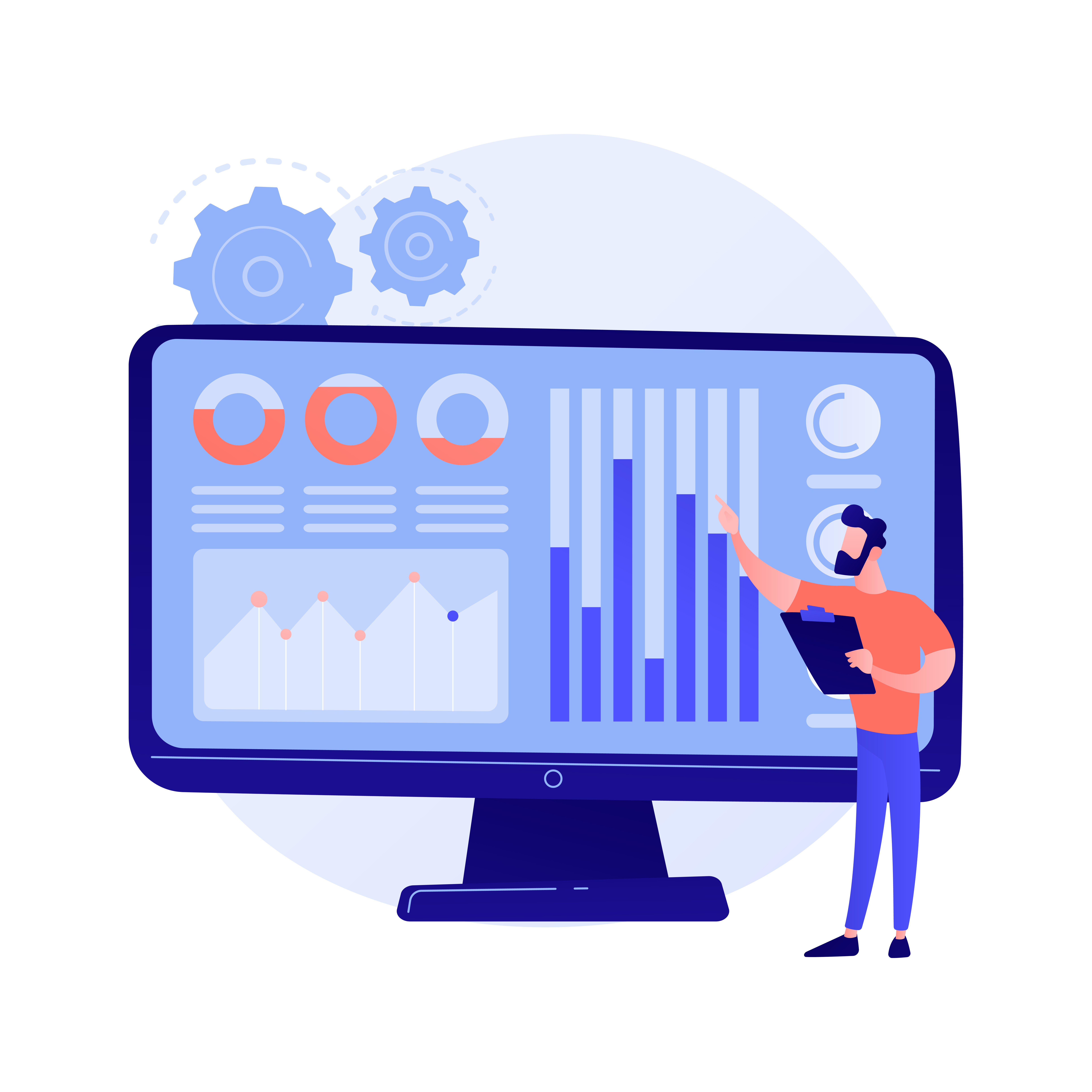In software development, technology stacks have become essential for success. These stacks, composed of programming languages and tools, offer a structured foundation. This article explores the top 10 benefits that make technology stacks crucial in modern software development.
From enhancing collaboration to ensuring scalability and security, these advantages play a pivotal role in project success. Let’s delve into how leveraging technology stacks can elevate the efficiency of software development processes.
Technology Stacks in Software Development
In tech, we often use fancy words and trendy phrases in our everyday talks. One of these phrases you might hear is “technology stacks,” which just means a technology stack.

Technology stacks are like the building blocks for creating apps. They help developers make apps that work well, can grow, and have the features businesses need every day. Whether you’re a pro developer or just getting into software and web development, it’s important to know what a tech stack is and how it helps.
What are the various layers that makeup Technology Stacks?
1. Operating System (OS)
This silent powerhouse manages computer hardware and supports other software functions. Examples: Linux, Windows, macOS.
2. Server-Side Programming
Involves languages like Java, Python, Ruby, PHP, Node.js, and related frameworks. Handles business logic, data processing, and communication with databases and services.
Examples: Java, Python, Ruby, PHP, and Node.js.
3. Web Server
Manages HTTP requests and delivers web pages to users. Examples: Apache HTTP Server, Nginx, Microsoft IIS.
4. Databases
The memory bank of your app, storing and managing data precisely. Examples: Reliable MySQL, flexible MongoDB, powerful PostgreSQL.
5. Client-Side Programming
The creative mind behind the user interface, executing code on the user’s device. Examples: JavaScript, TypeScript.
6. Front-End Frameworks/Libraries
Building blocks that enhance the user interface and simplify development.
Examples: React, Angular, Vue.js, jQuery.
7. Deployment & Infrastructure
The strategic overseer guiding the transition from development to a live environment, supported by the backbone of hardware and network infrastructure.
Examples: Docker, Kubernetes, AWS, Azure, Google Cloud Platform.
These are the crucial layers, each contributing its specific role, collaborating to form a complete and functional system or application. Additionally, it’s important to note that the technologies and components chosen for each layer depend on your project’s requirements, size, performance goals, intended platform (web, mobile, desktop), and the expertise of your software team.
Technology Stacks Statistics
More than 100,000 developers have opted for Technology Stack as their preferred development framework. The growth rate of Technology Stack exceeds 20% per month. Approximately 30% of websites powered by Technology Stack belong to the high-traffic category, including notable names such as TechCrunch and TheNextWeb.
Impressively, Technology Stack sites have processed over 38 million API requests within just one year since their launch.

This data unequivocally demonstrates the popularity and effectiveness of Technology Stack as a development framework. It has emerged as one of the most favored choices in web development for several reasons. Firstly, it is an open-source framework, freely available for download and use. Secondly, its lightweight nature and user-friendly design make it particularly suitable for novice developers.
Moreover, Technology Stack offers a diverse range of features, catering to both small and large projects. The framework is consistently updated with new features and improvements, ensuring that developers always have access to the latest tools.
Technology Stack proves to be an excellent option for web development projects of all sizes. Its popularity is well-founded, and its impressive growth rate suggests that its prominence in the development community will only continue to rise.
How Contemporary Technology Stacks Operates
In comparison to traditional tech stacks, a modern tech stack encompasses a greater number of components. This expansion is attributed to the proliferation of devices that users can access applications from and the demand for enhanced functionality and scalability.
As a result, modern tech stacks are more resilient and diverse. The functioning of a modern tech stack revolves around the integration of various technologies to form a cohesive system.
Typically, a modern tech stack comprises programming languages, frameworks, databases, cloud-based systems, internal tools, analytics tools, and other components, all orchestrated to enable developers to swiftly create applications.
These elements collaborate to establish an integrated tech stack where they interact and communicate, contributing to a more immersive user experience.
Importance of Tech Stack in Software Development?
Before delving into the diverse tech stacks for software development, it’s essential to understand why a tech stack holds such importance.
Essentially, a tech stack serves as the backbone of software – a sturdy foundation is crucial for constructing robust applications.
Prior to initiating a project, it is imperative that your dedicated software development team possesses a clear understanding of the chosen tech stack. The hired software developers should be well-versed in the technologies earmarked for coding, UI/UX development, and database management. Additionally, they should have insights into the third-party integrations necessary for software construction.
During the tech stack selection process, the software development team takes into account various factors, including:
- Goals to be achieved with the software
- Integration of different technologies
- Skillset of available developers
- Streamlining of different technologies and processes
- Bug elimination and software testing
- Efficient planning for easy software maintenance
- Future prospects for updates and the addition of new features
Choosing the right software development tech stack is pivotal, as it significantly impacts the final product. Consider the following checklist to gauge its influence on various aspects of the software:
- Functionality of the software in the future
- Selection of data storage
- Scalability of the software
- Capacity of your server systems
Use Cases of Tech Stacks
Tech stacks demonstrate optimal performance when customized for the specific application under development. Consequently, the tech team needs to carefully assess the requirements of their project and choose the most suitable tech stack.
Here are some use cases of tech stacks to provide insight into their functionality.
User Interface on Browser
The browser’s user interface, commonly referred to as the frontend, constitutes the part of an application that users directly engage with. It plays a pivotal role in presenting the visual and interactive elements of an application.
For an effective frontend tech stack, it is essential to include programming languages such as HTML, CSS, and JavaScript. These languages contribute to the creation of visually appealing, efficient, and responsive user interfaces.
To enhance the user-friendliness and aesthetic appeal of web applications, consider incorporating the following technologies into your frontend stack:
- HTML: Defines the elements of a page, facilitating the insertion of text, images, and other essential components.
- CSS: Styles and formats the page, enabling developers to define colors, fonts, images, and other design elements.
- JavaScript: Adds interactive elements, allowing developers to create dynamic web pages that respond to user input.
Programming Language
The programming language serves as the fundamental building block for any application or website. As such, the choice of programming language(s) should align with other technologies within your tech stack and meet the specific requirements of your project.
Additionally, it should be compatible with the framework in use and have an active community, facilitating developers in finding solutions through help desk software.
In popular startup tech stacks, languages like Python, Ruby, PHP, and JavaScript are frequently employed due to their versatility and robustness. For instance, Python excels in web development, machine learning/AI, data analysis, and scripting, while Ruby is recommended for startup applications due to its scalability and rapid application development capabilities.
Framework & Backend Services
The backend of a web or mobile application bears the responsibility of data generation, database connections, user request handling, and notification dispatch. To manage these tasks and provide structure for developers, a backend framework is employed, offering a set of tools, libraries, and APIs for the efficient development of backend applications.
Several popular backend frameworks include Drupal, Ruby on Rails, ASP.NET Core, Django, and Spring Boot. Each technology boasts unique features and advantages, prompting the need to select the one most suited for your project.

For instance, if you’re constructing an e-commerce store with complex transactions, Django might be the optimal choice. On the other hand, for a content management system, Drupal could be preferable, offering robust SEO tools and a user-friendly interface.
Moreover, the selection of appropriate backend services is crucial, encompassing databases, caching systems, storage services, analytics tools like Google Analytics, and other essential components. This comprehensive backend technology stack is essential for the seamless operation of your application.
Database
The database serves as the cornerstone of any web or mobile application, storing, retrieving, and updating data to furnish users with essential information while ensuring data security.
Various types of databases are available for incorporation into your tech stack, with relational databases such as MySQL, PostgreSQL, and Oracle standing out as the most popular choices.
Regardless of the database selected, compatibility with other technologies in your tech stack is paramount. For example, if your backend framework is Ruby on Rails, opting for databases like MySQL or PostgreSQL is advisable. Ruby on Rails is optimized for seamless integration with these databases, streamlining the development process.
Operating System
The operating system forms the foundational layer of your entire tech stack, overseeing the management of a computer system’s hardware, software, and user interfaces. Linux, Windows, and macOS are popular choices for operating systems in tech stacks.
Each operating system boasts distinct features and capabilities, necessitating careful selection based on the specific requirements of your tech stack. Linux, known for being open-source, secure, and reliable, is often preferred in startup tech stacks.
Windows suits applications with complex hardware requirements, while macOS is well-suited for applications emphasizing graphical user interfaces.
Top 10 Benefits of Using Technology Stacks

The usage of tech stack is more than convenience; it constitutes a strategic decision capable of profoundly influencing the success of a project.
Tech stacks bring forth a multitude of advantages that not only facilitate development but also boost productivity while guaranteeing the scalability and longevity of applications.
Several noteworthy benefits include the following:
Efficiency
Embracing a tech stack yields a conspicuous enhancement in efficiency. Tech stacks are equipped with pre-existing libraries, frameworks, and modules that streamline routine tasks, enabling developers to concentrate on creating distinctive features.
This acceleration in project timelines minimizes time-to-market, ensuring sustained competitiveness for your app in the long run.

Tech stacks are purposefully crafted to capitalize on the strengths of thual components. By judiciously selecting the right tech stack, developers can optimize application performance, leading to quicker load times, responsive user interfaces, and effective resource management.
Scalability

A thoughtfully designed tech stack is instrumental in fostering scalability. It empowers developers to seamlessly add resources, adjust configurations, or integrate new technologies. This capability ensures that your application can adapt and expand in tandem with the growth of your business.
Ease of Maintenance
Maintenance is a pivotal aspect of software development, and a carefully selected tech stack can considerably simplify this process. Tech stacks with robust support and active communities offer continuous updates, security patches, and valuable resources for resolving issues. This ensures that your application remains secure, up-to-date, and easily manageable over time.
Community and Support
Nearly every tech stack boasts substantial communities that provide ongoing support and a wealth of resources for developers. Engaging with these communities enables developers to troubleshoot issues, seek advice, and stay abreast of industry trends.
This support network serves as a valuable lifeline, particularly when tackling complex challenges or implementing new features for your app.
Cross- Platformfrom Compatibility
Numerous contemporary tech stacks are intentionally crafted to be cross-platform, empowering developers to construct applications that seamlessly operate across multiple operating systems.
This versatility significantly expands the reach of your application, enabling it to connect with a broader audience.
Cost-effective Development
Employing a tech stack can prove to be highly cost-effective. Utilizing open-source technologies within a stack can curtail licensing expenses, and the presence of pre-built components can result in significant savings in terms of both time and resource development. This cost efficiency holds particular advantages for startups and small businesses.
Security and Reliability
Security is crucial in software development, and established tech stacks frequently incorporate built-in security features and adhere to best practices. The reliability of well-known components within a tech stack contributes to a more secure overall environment for your application.
Collaboration is Easier
Utilizing a technology stack brings the advantage of streamlined collaboration within teams. In the case of React Native, which employs standard JavaScript, developers acquainted with the language can swiftly adapt and contribute code to the project.
This ease of collaboration extends to designers as well, who can create interface components without requiring specialized knowledge about coding.
It’s Open-Source
Being open-source, the technology stack has garnered a substantial and dynamic community of developers consistently enhancing the framework. This ensures access to a plethora of libraries, modules, and tools that can be incorporated into your projects.
Moreover, in times of challenges or queries, the online community is readily available for support and assistance.
It’s Fast and Versatile
The technology stack excels in delivering rapid performance for web applications, ensuring a swift and responsive experience for users. Additionally, its versatility shines through, as it can be effectively employed across a broad spectrum of applications, ranging from small websites to large-scale databases, showcasing its adaptability for diverse projects.
How to Select the Best Tech Stack for Your Project?
Having information about various tech stacks and understanding their pros and cons is a valuable starting point for determining the most suitable tech stack for your project.

However, aligning the chosen tech stack with the specific needs of your project is a critical decision, as an erroneous selection can lead to financial setbacks. Here are some essential tips to guide you in selecting the right tech stack for your project:
How to Select the Best Tech Stack for Your Project?
Having information about various tech stacks and understanding their pros and cons is a valuable starting point for determining the most suitable tech stack for your project.
However, aligning the chosen tech stack with the specific needs of your project is a critical decision, as an erroneous selection can lead to financial setbacks.
Here are some essential tips to guide you in selecting the right tech stack for your project:
1. Consider Project Size and Complexity
As projects grow in size and complexity, leveraging advanced tech stacks becomes increasingly important.
2. Define Project Functionalities and Audience
Identify the functionalities and target audience of your project. Conduct competition research to pinpoint specifications that the chosen tech stack should meet.
3. Performance Requirements
The efficiency, compatibility, and performance of your application depend significantly on the type of tech stack employed. Select a tech stack based on the specific performance requirements of your project.
4. Evaluate Processing Load Capacity
Check the capacity of the tech stack to meet the system processing load requirements of your project.
5. Scalability:
The scalability of the tech stack is crucial for accommodating business growth in response to user requirements.
6. Project Timeline
Choose a tech stack that enables accelerated app development to meet project timelines.
7. Security and Privacy
Verify the security and privacy features of the chosen tech stack, as these aspects directly impact the final product.
8. Success Stories
Identify brands that have successfully used the chosen tech stack, as this serves as an assurance of quality and reliability.
[Want to learn more about Software maintenance and technology stacks? Click here to reach us.]
Conclusion
To sum up, using technology stacks in software development brings numerous benefits. These include improved collaboration, cost-effective development, scalability, security, and reliability. The strategic selection of a tech stack aligns with project needs and accelerates development timelines.
The open-source nature of many tech stacks ensures robust community support, providing valuable assistance for developers. As the digital landscape evolves, incorporating technology stacks is not just convenient but offers a strategic advantage in creating innovative, efficient, and scalable solutions.
PREVENT YOUR SERVER FROM CRASHING!
Never again lose customers to poor server speed! Let us help you.
Our server experts will monitor & maintain your server 24/7 so that it remains lightning fast and secure.







0 Comments